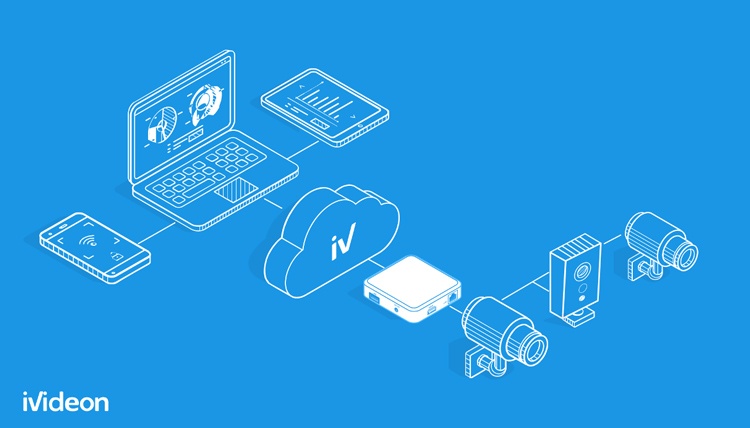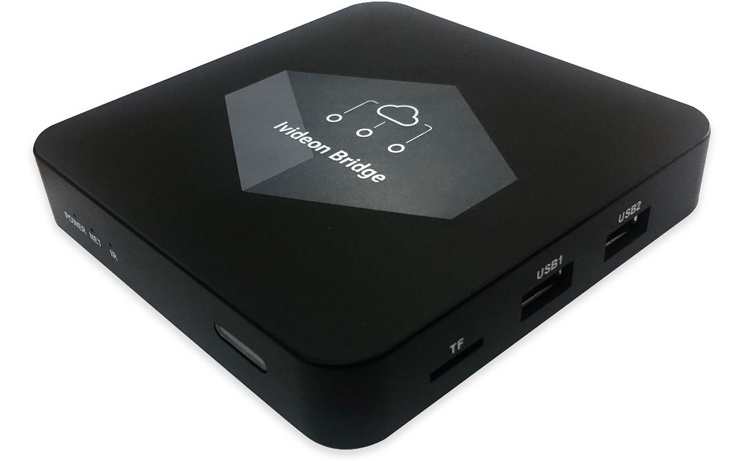Beyond surveillance: how integrating video surveillance cameras into digital systems can unlock opportunities for business
26.12.2019

Chain retailers care about one question more than anything: how do I stay ahead of the competition? And there are all kinds of tools and solutions out there claiming to boost efficiency. Not at all surprisingly, it’s easy to get lost, which is why we’re here to tell you what you can really do to build your competitive edge.
Another side of video surveillance
Two constant thorns in the side of retail are theft and keeping an eye on what’s happening at the cash registers. Standard operating procedure is to set up your usual video surveillance system covering the floor and register banks, but today we’re going to see how much more those cameras can do.
When video surveillance systems only cover surveillance, retailers are missing out on opportunities to dig deeper into their business and better understand their customers.
Integrating cameras with digital systems offers the chance to automate data collection, analyzing image sequences in the process. When the first video analytics services popped up, they turned devices for control and security into what are ultimately marketing tools.

Next came complex algorithms for video analysis. They count visitors, recognize faces, track statistics for cash operations, and do so much more. In fact, they take the human factor out of it completely—computers objectively collect, process, and report on the data. And computers don’t get tired or go on vacation.
Another concern for business is boosting profits and cutting the expenses that come with supporting IT infrastructure. But cloud services like Ivideon can help with that. When retailers move to VSaaS (video surveillance as a service), the money they spend installing and servicing their local system drops by an average of 50%.
For example, let’s say thereֹ’s a chain of 16 stores that needs to roll out a video surveillance system with video storage for 30 days. Here’s the line items you’d find in the price sheet for a traditional system:
- Hard drives totaling 4 TB
- DVR
- System support
- Hard drive replacement
Even without the cameras, a traditional video surveillance system would run you about $4,000.
Installing a cloud-based system doesn’t involve additional hardware or support. A system with 16 channels and 30-day storage would cost about $3,200 a year aside from the cameras.
Migration problems
Moving to VSaaS made video analytics affordable. Instead of expensive local servers with advanced analytics modules, the Ivideon cloud architecture puts additional services a click or two away from an unlimited number of cameras—and it’s far cheaper too.
But that opportunity for retailers comes with a problem that can get in the way of a seamless transition to the cloud. For example, let’s say we have a store where a video surveillance system was installed a few years ago to cover and store video from the sales floor and cash registers. The owner eventually realizes that the cameras aren’t doing enough for the business, not with the competition detecting queues, monitoring employees, and automating control over cash operations.
The obvious and more expensive solution is to replace the whole system, eating the cost that involves. But Ivideon took a look at that and came up with a different option that lets retailers save money and pull any video surveillance system into the cloud in just a few minutes.
Bridge to the rescue

In 2019, our company released a gadget the size of a small Wi-Fi router: Ivideon Bridge.
The little box lets you connect up to 16 cameras to the Ivideon cloud. That means users with local systems get access to a modern cloud service with video surveillance and video analytics, all without replacing existing hardware. You can even add analog cameras to the cloud so long as the video recorder is connected to an Ivideon Bridge. And the device costs just $158.
The price per channel Bridge has to offer makes it the cheapest way to connect to the Ivideon cloud—each channel connected to the base storage option runs retailers $10. By way of comparison, buying a cloud-enabled camera would push the price per channel to $54.
When Ivideon Bridge comes in handy
Let’s look at four scenarios where retailers should really give our new gadget a long look:
You decided to scale up your video surveillance system, bought cameras with internet access, and connected them to a cloud service.You’ll need Ivideon Bridge to lump your old cameras in with your new ones and manage the whole system using a single interface.
Your location is equipped with old cameras that don’t offer remote access via the internet. In that case, Bridge will give you access to live broadcasts, an archive, and even camera settings.
You have video surveillance systems set up at multiple locations, though they’re from different providers, you have to use a variety of apps to keep track of them, and you’d like to combine the whole mess into a single interface.
You’re looking to cut down on your system maintenance costs. Bridge connects your cameras to the cloud, letting you manage them remotely. Alternatively, you can add cameras through the web application—all you have to do is connect the devices, and a representative from Ivideon will handle the rest.
New technology lets retailers cut expenses, save money, and ultimately earn more. Investing in that technology doesn’t look like the hare-brained idea it used to. These days, it’s a convenient, user-friendly tool for business that empowers you to turn the data you collect offline into hard cash, interacting with your target audience better than anyone else in the market.
If you have questions about the Ivideon solutions, get in touch.
How do you want to connect Ivideon?

